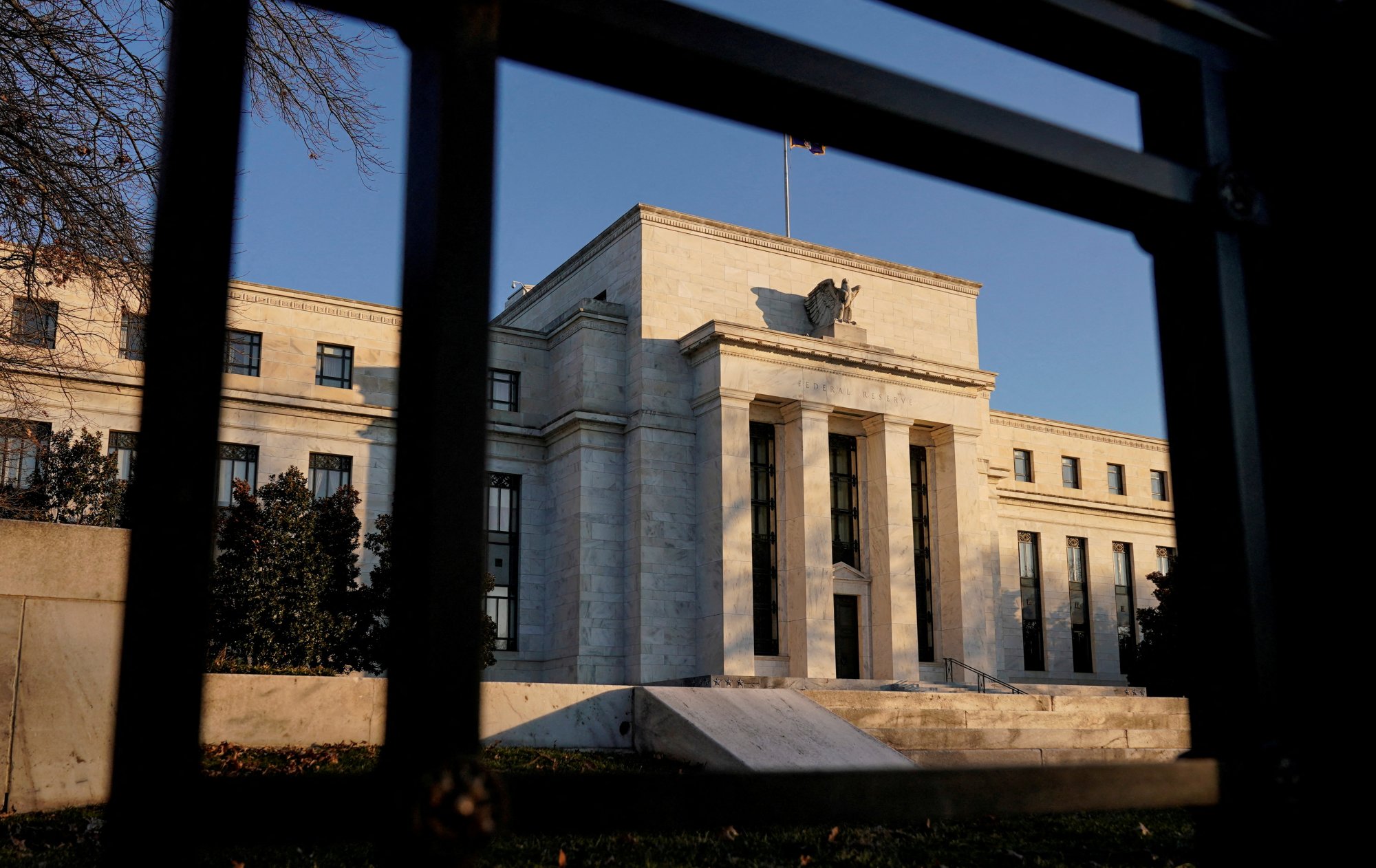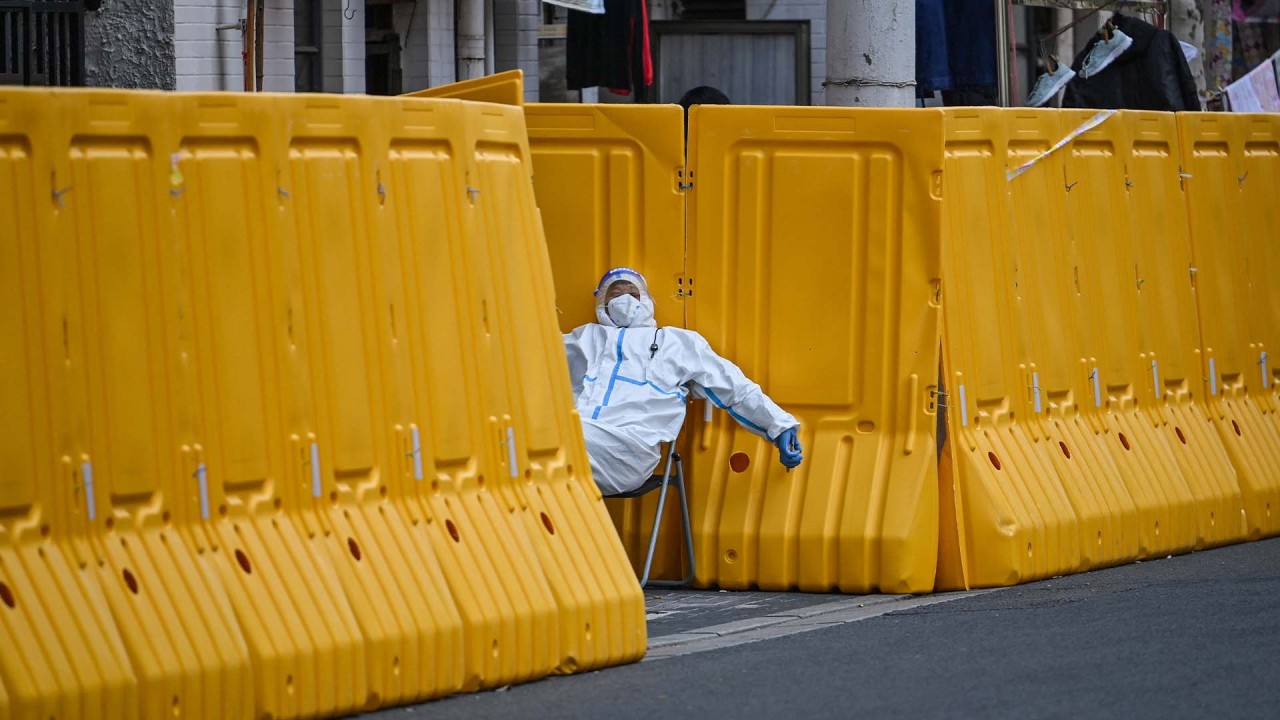
With China focused on zero Covid and the Fed in ultra-hawkish mode, who will blink first?
- Markets may be smarting from the Ukraine war, but it’s the self-inflicted wounds of China’s zero-Covid policy and the Fed’s monetary tightening that really hurt
- The only hope is for China’s outbreak and US inflation to be brought under control enough to prevent more drastic measures, but this is far from guaranteed
Are the dark clouds hanging over the global economy showing any sign of lifting? The sharp and persistent declines in financial markets over the past two months suggest investors are becoming gloomier about the world. In a marked departure from previous bouts of turmoil, traders are no longer “buying the dip” when markets tumble. Instead, they are selling every rally.
Last week, the benchmark S&P 500 equity index suffered its seventh straight week of losses, its most prolonged decline since 2001. A report by JPMorgan published on Wednesday noted that every single major asset class, with the exception of commodities and the US dollar, has posted negative returns so far this year.
While the commodity shock stemming from Russia’s invasion of Ukraine has hit Europe particularly hard, two other shocks are proving more damaging to global growth and asset prices: China’s uncompromising “dynamic zero-Covid” policy and the US Federal Reserve’s most aggressive monetary tightening campaign in decades.
The unexpected citywide lockdown of Shanghai, China’s financial hub and home to the world’s busiest container port, has caused a sharper loss of confidence in the world’s second-largest economy, which was already under severe strain due to a liquidity crisis in the all-important property sector.

The volte-face by the world’s most influential central bank – as recently as last October the Fed was not even sure if it would raise rates this year – has heaped pressure on its main peers, in particular the European Central Bank, to turn more hawkish. This increases the risk of a synchronised slowdown, fuelling concerns about stagflation.
As fears over inflation give way to a global recession scare, speculation is mounting that policymakers in Beijing and Washington will be forced to reverse course. A zero-Covid policy and an ultra-hawkish Fed could be too much to bear for a rapidly slowing world economy.
The perception that Beijing is relenting is reinforced by the government’s more forceful stimulus – Bloomberg estimates that monetary and fiscal easing measures this year will amount to US$7.3 trillion, almost as much as in 2020 – and stronger resolve to shore up growth. For some investors, Shanghai’s devastating lockdown marked the high-water mark for the zero-Covid strategy.
There are also signs the Fed will eventually blink. While bond markets the world over have been hammered by the shift to more restrictive policy, US long-term bonds have rallied since early May, while market gauges of long-term inflation expectations have been falling.
With the Fed hiking rates into a sharp downturn, many investors believe it will be forced to cut short its tightening cycle to avert a hard landing. Most of these investors also believe inflationary pressures will subside sufficiently for the Fed to maintain credibility.

Yet, what happens if neither Chinese nor US policymakers blink, or by blinking they create bigger problems?
While China’s infection rates have fallen sharply, there is no indication that Beijing is about to abandon its zero-Covid policy. Patchy vaccine coverage and insufficient medical resources mean that all investors can realistically hope for is that draconian restrictions quash the virus, allowing the economy to reopen.
An out-of-control outbreak could kill as many as 1.6 million people in three months, researchers from Fudan University warned.
As for the Fed, markets are still pricing in a soft landing scenario: interest rates do not rise excessively, the economy avoids an outright recession and inflation comes down sharply enough to avoid further tightening.
Why Fed can’t kick inflation can down the road much longer
Yet even if growth collapses, it is unlikely that inflation will return to the Fed’s 2 per cent target any time soon, especially given signs that the US is on the cusp of a wage-price spiral. The Fed and the markets paid a heavy price for underestimating the inflation threat. This may yet happen again.
China’s zero-Covid strategy and the Fed’s aggressive rate-hiking cycle are spooking markets. Yet, investors who are betting on a reversal of both policies should be careful what they wish for.
Nicholas Spiro is a partner at Lauressa Advisory


